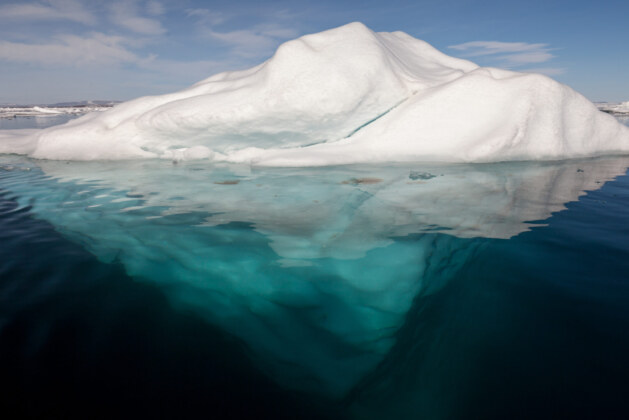When we look at massive icebergs drifting across the ocean, it feels almost impossible to believe that such gigantic blocks of ice don’t sink. The secret lies in two simple but powerful concepts of physics: buoyancy and density. These ideas not only explain why icebergs float but also connect to everyday things we see around us — from ice cubes in a glass of water to the survival of life in frozen lakes.
Table of Contents
Introduction
Icebergs are among the most fascinating natural wonders on Earth. They are huge, often weighing millions of tons, yet they float effortlessly in the ocean. But how is that possible? Shouldn’t something so heavy sink? To understand this mystery, we need to break down two fundamental physics concepts: density (how much mass is packed into a certain volume) and buoyancy (the upward force that liquids exert on objects placed in them).
By looking at icebergs, we can see a real-life demonstration of these principles and understand why only about 10% of it only visible above water, while the rest remains hidden beneath the surface.
The Role of Density: Why Ice Is Lighter Than Water
Normally, we expect solids to be denser than their liquid forms. For most substances, when they solidify, their particles pack more tightly, making the solid heavier per unit volume. But water behaves differently.
- In liquid water, molecules move freely and stay relatively close together.
- In solid ice, water molecules form a crystalline structure held by hydrogen bonds. This structure leaves more empty space between the molecules, making ice less dense than liquid water.
That’s why ice floats — and the same principle applies to icebergs. Despite their massive size, they are still less dense than the seawater beneath them.
The Principle of Buoyancy: Archimedes’ Law in Action
To fully understand why icebergs float, we need to bring in Archimedes’ Principle of Buoyancy. This law states:
“Any object submerged in a fluid experiences an upward force equal to the weight of the fluid it displaces.”
What this means for icebergs:
- When it enters the ocean, it pushes water aside.
- If the weight of the displaced water equals or exceeds the weight of the iceberg, it will float.
- Because ice is less dense than water, it displace enough water to balance their weight before they are completely submerged.
This is why only a small portion of the it sticks out above the water’s surface — typically about 1/10th — while the majority stays hidden below.
Everyday Examples: From Glasses to Lakes
This principle isn’t limited to giant icebergs in the Arctic. You’ve probably seen it in your daily life:
- Ice cubes in a drink float for the same reason — their density is lower than the liquid.
- Frozen lakes and ponds form ice at the top, not the bottom, because the ice floats and creates an insulating layer that helps aquatic life survive the winter.
Icebergs, in many ways, are just gigantic floating ice cubes on Earth’s oceans.
Environmental Importance
The floating nature of icebergs is not just a neat scientific fact; it plays a critical role in our planet’s environment.
- Climate Regulation: Icebergs reflect sunlight, helping cool the Earth’s surface.
- Marine Ecosystems: As icebergs melt, they release fresh water and nutrients into the ocean, supporting plankton and marine life.
- Global Warming Concerns: With rising global temperatures, icebergs and glaciers are melting faster, disrupting ecosystems and raising sea levels.
The simple fact that ice floats is deeply tied to the balance of life on Earth.
Conclusion
It may appear as towering, immovable giants of ice, but their ability to float is rooted in the elegant simplicity of physics. Thanks to the lower density of ice compared to water and the principle of buoyancy, icebergs can drift across oceans, shaping ecosystems and regulating climate.
Next time you see ice floating in your drink, remember — you’re witnessing the same physics that keeps massive icebergs afloat in the sea. A small everyday observation connects us to one of nature’s most powerful demonstrations of science in action.
Read More: Microplastics in Everyday Meals: Are We Eating Plastic Without Knowing It?




